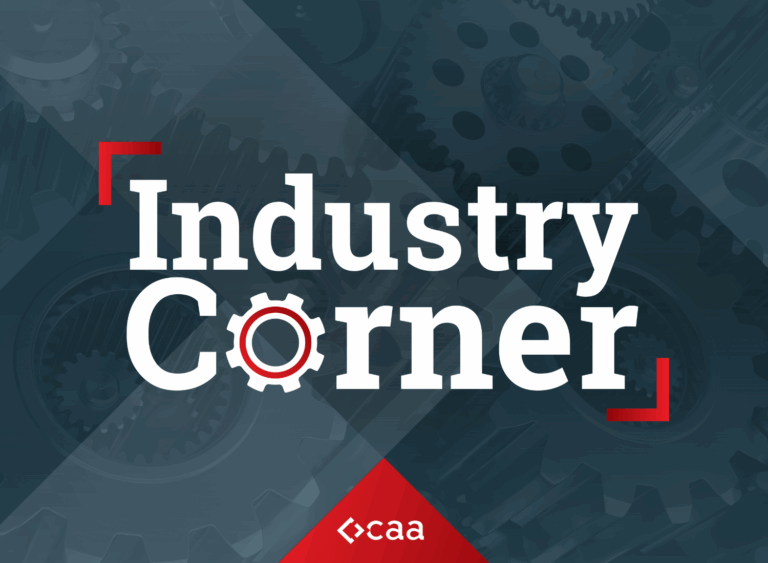Spotlight On: Joy Bodin, President, Hennepin Technical College
 November 2024 — In an interview with Invest:, Joy Bodin, president of Hennepin Technical College, discussed the enrollment landscape as families’ priorities shift away from four-year colleges, aligning programs with industry demands, and fostering community collaborations to ensure students are job-ready.
November 2024 — In an interview with Invest:, Joy Bodin, president of Hennepin Technical College, discussed the enrollment landscape as families’ priorities shift away from four-year colleges, aligning programs with industry demands, and fostering community collaborations to ensure students are job-ready.
Reflecting on the past year, what have been the most significant achievements at Hennepin Technical College under your leadership?
At HTC, we have focused on investment both in our students and in the college itself. We have expanded several programs, including our plumbing, HVAC, IT, dental and robotics programs. These expansions were driven by the needs of our industry partners and by high student demand. The goal was to better support our students, address the needs of our industry partners, and contribute to our local workforce, thus strengthening our role in the community.
Another notable achievement has been the launch of our new strategic plan. This initiative brought our all stakeholders together to outline the vision and goals that will guide us over the next five years. It has been exciting to see everyone collaborate and commit to shaping our path forward, especially as the largest stand-alone technical college in Minnesota. Our mission is clear: we train people for high demand, high wage positions, and we do that more effectively than any other institution in the state.
How is the college responding to Minnesota’s evolving labor market needs, especially in high-demand industries like manufacturing, healthcare, and IT?
We are very proactive in this area. For instance, in IT, we produce the largest number of graduates among two-year colleges. Our offerings span from help desk technician roles all the way to cybersecurity. We recently achieved national accreditation for our cybersecurity program. This accreditation is typically awarded to four-year institutions, so it was a proud moment for us to be recognized at this level.
In response to the increase in automation and AI in manufacturing along with the growing semi-conductor industry in Minnesota, HTC expanded our Automation Robotics program, including the expansion of apprentice model training in partnership with ICATT.
In the healthcare sector, we have expanded our dental assistant program, and we are working to introduce dental hygiene over the next few years. These fields offer high-paying jobs, and there is a clear workforce gap that we can help to address.
How do your programs keep pace with technological advancements in fields like advanced manufacturing and cybersecurity?
Our Customized Training department works directly with companies to up-scale their employees. Sometimes, companies ask us to send instructors to their sites to conduct on-the-job training. Other times, they send their employees to our campus for instruction on new systems or processes. This collaboration keeps us laser-focused on our mission and ensures we stay up-to-date with emerging technologies.
We are also fortunate to have many industry partners that are willing to donate time, talent, equipment, and cash to support us in keeping up with the latest technical advancement. Last year, HTC received over $1 million in donations.
How is the economic climate impacting enrollment and demand for technical education?
The workforce need is skyrocketing for highly skilled employees with technical training. Our students often have multiple job offers before they graduate. HTC offers day and night programs to fit into our students’ schedule so they can work while they go to school. I am proud to report that we have seen significant enrollment increases — 25% over the summer and over 16% this fall. Part of this growth comes from our expanded programs, but we are also seeing a shift in perception around technical education within our communities.
Traditionally, families prioritized sending their children to four-year colleges. However, people are increasingly recognizing the earning potential in high-tech fields, and students are seeing they can graduate with little debt. This shift has been particularly valuable for our campuses in Brooklyn Park and Eden Prairie, where technical education is now seen as an essential pathway to success.
Which industries are driving the most demand for graduates?
I will answer that in two parts. First, I will list our top programs. At HTC, the programs with the highest enrollment are IT, law enforcement, heating ventilation and air conditioning (HVAC), auto mechanics, and dental.
We also have strong demand in our Ford ASSET Program and in our medium and heavy truck programs. In these programs, students are hired before they even set foot on campus. They follow an eight-week rotation, alternating between on-campus study and paid internships in the industry, repeating this cycle over two years. These programs are incredibly popular because industries recognize the quality of education and training that our students receive, which aligns well with their workforce needs.
What role does your institution play in the broader economic landscape or development of the Minnesota region, especially in sectors like IT and healthcare?
Our role is deeply collaborative. We work in partnership with the industry, which is critical. Industry partners are often donors who provide equipment, either to start new programs or to keep our labs up-to-date. They are integral in guiding us on what skills our graduates need, including any new trends they see coming. This collaboration helps us understand the technical and soft skills that are essential for success in these industries. So, while we focus on training a skilled workforce, we rely on industry partners to inform us about the latest requirements. Often, they also contribute by helping us design labs that mimic real-world industry settings.
What are the primary challenges you face in providing a skilled labor force in these technical fields, and how are you addressing these challenges?
One of the biggest challenges is the high cost of equipment for our labs. To address this, we have sought alternative funding sources and partnered with industry leaders who donate equipment or lease it to us for a nominal fee, often just one dollar per year. Keeping our labs up-to-date with the latest technology is essential, but remains a significant financial hurdle.
Another challenge is meeting the needs of students who work full- or part-time while studying. An average age student at HTC is 27; they are independent working adults. Many are parents. veterans, recent immigrants, and increasingly many are of a non-traditional gender for the industry they’re pursuing. It is essential we have resources on campus to support them in and out of school.
How do cross-industry partnerships help shape not only the curriculum but also ensure that students are job-ready in industries facing talent shortages?
Many programs on our campus include practical experience through internships, clinicals, externships, and apprenticeships. After completing sections of their studies on campus, students move into paid internships in the field. Faculty members then visit the students at their job sites to check in with both the students and industry partners, ensuring that students are developing the technical and soft skills needed.
At this point, industry partners may highlight specific skill gaps they notice, asking us to address them for that student and future students. Faculty members can adapt their teaching to address these needs. Industry partners consistently emphasize the importance of soft skills like communication, technical literacy, and problem-solving. While we can teach technical skills, embedding these soft skills into all our technical training is crucial to ensure students are truly industry-ready.
For more information, please visit:













